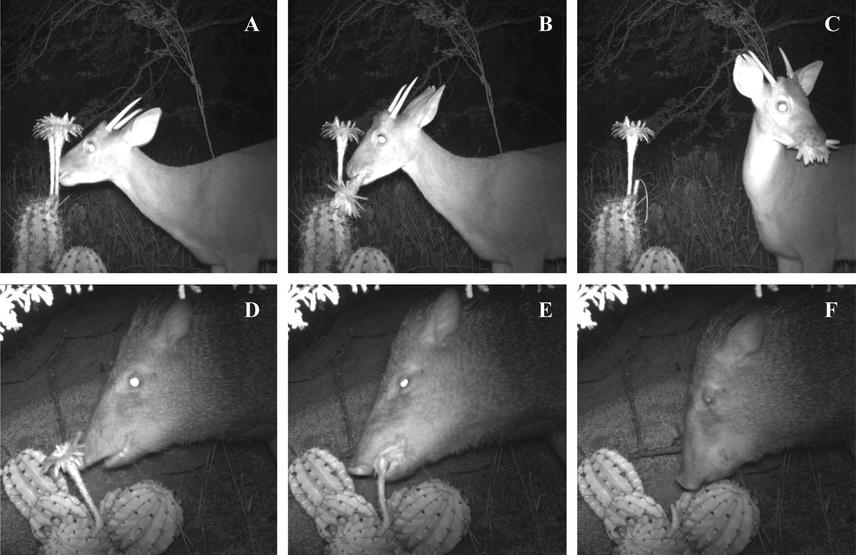Vanessa Gabrielle Nóbrega Gomes
Other projects
6 Feb 2020
Conservation Support for Endemic and Threatened Cacti Species in the Brazilian Caatinga
We aim to characterize flower and fruit morphology, as well as the resources provided by cacti species occurring in the Brazilian Chaco, relating these characteristics with their potential pollinators and seed dispersers.

Vertebrate florivory by Mazama americana (a–c) and Pecari tajacu (d–f) on Echinopsis rhodotricha in the Brazilian Chaco.
Cactaceae is a key component of the arid floras and one of the most diverse families in the Neotropics. According with IUCN, high proportion of cacti species are under extinction risk. The main threats are smallholder ranching, agroindustry plantations and grazing. Additionally, given its ornamental potential, particular collection activities and illegal trade also threaten this family. The Brazilian Chaco is an endangered environment with peculiar flora and restricted distribution to Mato Grosso do Sul state. This region is characterized by the occurrence of anthropic disturbances (smallholder ranching and grazing) and strong seasonality. Studies involving floristic, physiological, taxonomic and ecological aspects of cacti in the Brazilian Chaco are scarce. Cacti species occurring in this environment remain completely unknown regarding their ecological interactions.
Therefore, we aim to characterize flower and fruit morphology, as well as the resources provided by cacti species occurring in the Brazilian Chaco, relating these characteristics with their potential pollinators and seed dispersers. Also, to evaluate aspects related to pollination and seed dispersal, integrating studies of reproductive phenology, floral biology, reproductive systems as well as pollinator and seed disperser effectiveness.
The pollination and seed dispersal processes help understanding the ecological the dynamics of the species involved in these ecological services that ensure the maintenance and functioning of the ecosystem. The knowledge of mutualistic interactions facilitates the planning of basic guidelines to start an action plan for the cacti species conservation and management in this environment. From the results of this project, we can determine mitigation measures that will be essential for the conservation of cacti species in areas subject to strong anthropogenic disturbances such as Brazilian Chaco, where species have small populations depending of different animals group for its mutualistic interactions. Thus, knowledge about the mechanisms involved in these interactions is important, because their rupture can cause the loss of several species.